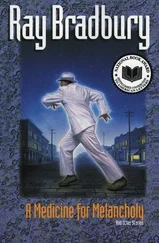I remembered a patient I had taken care of during an ER rotation a year earlier, an old lady with pneumonia. I had gotten a gas on her, too, and it had come back essentially normal. The attending had asked me to interpret it. “It’s normal,” I said. “And?” the attending replied, directing my attention to the patient gasping on the gurney. I looked at her for a moment. She was breathing about forty times a minute. “You’re about to tube her,” I said. “Right,” the attending said, and did just that. A normal gas on somebody working hard is a bad sign. A below-normal gas on somebody working hard to breathe on supplementary O 2is a very bad sign, especially if her chart carries the notation DNI . The letters stand for “Do not intubate.” It’s the patient’s order to her doctors and it draws an inviolable line. No breathing tubes, no ventilators, no call to the ICU for help.
I hurried back down the hall to the room. The sun had set, leaving the sky a dim purple. The room was dimmer still, the patient’s face a sheen on the white pillow, her chest visibly stroking from the door. I stood in the doorway for a minute, watching her, trying not to match her breathing with my own. Her face was turned to me. The eyes glittered.
“How are you feeling?”
“Not. So. Hot.”
“I know,” I said. “I’m going to get you some more oxygen.” I reached for the regulator in the wall and cranked it up to six liters, the maximum you can deliver by nasal cannula.
The nurse appeared at the door. “Do you want me to call Respiratory?”
“Yeah,” I said. “That’s good. Call Respiratory.” Respiratory therapists know all sorts of tricks: complicated masks that somehow squeeze more oxygen into room-pressure air.
I went back to the workroom and paged Keith. It occurred to me that I was displaying weakness. I told myself I didn’t care.
He called back in a minute, cheery, calm. “What’s up?”
I told him.
“She’s DNR? You checked the chart?”
I set the phone down and found her chart. There in the “Consents” section was the legal form, witnessed and signed.
“Yeah. DNR/DNI.”
“Well, that’s it,” he said. “If it’s her time, it’s her time. Just crank up her Os and give her some morphine. That’s all you can do.”
There was silence for a minute.
“Do you need me to come up there?”
“No. I’m on it. It’s okay. I’ll call you if I need anything.”
“Okay. Have a good night.”
It was eight-thirty. I went back to the patient’s room. A respiratory therapist had arrived, bearing a tangled mass of tubes and bags.
“What do you want her on?” The tech eyed the woman in the bed speculatively. “Fifty percent?”
“Let’s try that.” I watched a minute as the tech unstrung his tubes, fitting valves together. The face on the pillow was blanker than ever now: she had closed her eyes. Without that glittering motion, her face looked as if it were simply waiting.
HALF AN HOUR LATER, the nurse found me again.
“Do you want me to do anything for twenty-six?”
“Like what?”
“She won’t keep her mask on.”
“Why not?”
“She says she’s claustrophobic.”
I threw my pen down on the desk.
THE EYES WERE OPEN again, looking out through the plastic skin. She was holding the face mask in her left hand, about a foot away from her face, as if restraining something that had tried to attack her. Her chest was still rising and falling too fast.
I went to the bedside and crouched beside her. The eyes slanted down with me, the head immobile on the bed. “I won’t,” she said, and pushed the mask into my hands.
“Why not?”
She shook her head. “Can’t.”
“Is it uncomfortable?”
“Suffocating. Can’t.”
I bit back an argument. “How about I give you something to help you relax?”
“Why?”
“You need the mask. You’re not getting enough oxygen without it. If we can relax you a little, maybe you’ll feel better about wearing it.”
The eyes closed for a moment. “All right,” she said.
I told the nurse to give her a milligram of Ativan and two of morphine, and to try to get the mask back on her.
Just after nine the nurse reappeared in the doorway of the workroom and shook her head.
“She won’t keep the mask on.”
I pulled myself to my feet.
The patient was propped up in bed now, leaning forward, her hands braced on her thighs to support her. The posture is called “tripoding”; it’s something people do instinctively when they’re having trouble getting air. Her shoulders were lifting and falling rhythmically with each breath. She was using what are called the accessory muscles, anything to help expand the ribcage with inhalation. It can buy you a little extra air exchange, but the price, in terms of exertion, is more than most of us can pay for very long. The mask lay in her right hand, hissing.
She didn’t seem to notice me as I moved across the room; her gaze was straight ahead, intent on something. Each breath, I thought. Or perhaps something visible only to her through the far wall of the room.
“Mrs. B?”
Her gaze flickered my way, a brief acknowledgment, then back to her inner vigil, intent.
My first impulse was to ask her how she was doing. I stifled it. I reached out instead and took the mask from her. Her hand was stiff; the fingers yielded slowly. Her eyes turned toward me.
“Does this bother you so much?” I held the mask out.
She nodded and drew away. As if it could bite her, I thought.
“More than the way you’re feeling now?”
Her gaze clouded a moment. Unfair, I thought. Arguing with a dying woman.
She nodded again.
I sat at her bedside, holding the hissing plastic coil, looking into the mask. Reluctantly, unwilling to place my mouth where hers had been, I fitted the mask to my face, pressed the vinyl against my cheeks. I took a breath.
There was only a smell of plastic, then a high, eerily open sensation of emptiness. I took a breath, feeling my lungs expand; a vivid impression of spaces opening everywhere. I found her looking back at me, the eyes from the depths of her immobile face dark and liquid and alive.
I took the mask off. “It makes you feel confined?”
She nodded, shrugged.
“Have you tried taking deep breaths?” I was still buzzing with the force of the oxygen; my lethargy and sleepiness were all gone. I felt ready to take this woman on and bring her with me to morning.
She looked at me only a moment before turning to the far wall again, shaking her head. It occurred to me that she probably couldn’t take deep breaths.
I was still holding the mask.
“Did the sedatives help any?”
No.
“Would you like to try some more?”
Shrug.
I went to find the nurse. We doubled the dose of the Ativan. I watched, this time, as the drugs ran in, saw the relaxation I hadn’t believed the stiff skin could show, the subtle slumping of the shoulders. I waited, and when sleep seemed about to take her I slipped the mask over her face. A hand stirred, rose a few inches, wavered, then fell to her lap; she settled back against the bed. I stood there beside her, holding the mask in place, watching. After a minute or two, we checked the pulse-ox: 94 percent. Her respiratory rate was settling into the mid-twenties. Hours of accumulated tension dissipated from my own chest. The nurse and I walked quietly out the door. “Keep an eye on her,” I said.
I don’t remember what time the next call came. Probably around two. I was back in the workroom, running blearily over the results of the one o’clock draw, fielding pages from the floor. There had been a shift change at midnight, followed by a flurry of pages from the new shift coming on with questions. There was a patient down on 3 West who was refusing his prep for a scheduled colonoscopy.
Читать дальше












